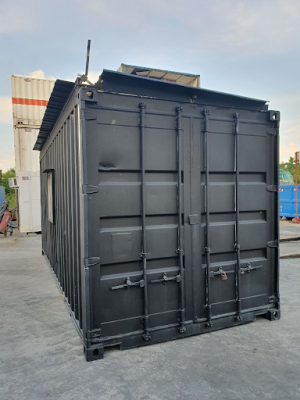From Rust to Riches: The Art of Upcycling Old Shipping Containers

In a world increasingly focused on sustainability and creative reuse, old shipping containers have emerged as unexpected heroes in the realm of design and architecture. Once the unassuming workhorses of global trade, these metal boxes are now transforming into everything from chic urban homes to innovative pop-up shops. The trend of upcycling old shipping containers is not just about giving these sturdy structures a second life; it’s about redefining how we think about waste and resourcefulness.
A Second Chance for a Global Nomad
Shipping containers are designed to be durable and weather-resistant, built to withstand the rigors of international transport. However, when they’re no longer needed for their original purpose, they can become prime candidates for upcycling. The concept of repurposing these containers is rooted in both environmental responsibility and creative ingenuity.
The upcycling process begins with acquiring the containers, which are often sourced from shipping yards or surplus auctions. These containers come with a history—sometimes a little rusty, sometimes a bit dented, but always full of potential. Once in the hands of designers and architects, they undergo a transformation that can be as dramatic as it is imaginative.
Designing with Containers: The Possibilities Are Endless
The versatility of shipping containers opens the door to a wide range of design possibilities. Architects and designers have used them to create everything from modern homes to artist studios, coffee shops, and even emergency shelters. The basic structure of a shipping container—its rectangular form and robust steel construction—provides a blank canvas for a variety of design innovations.
One of the most popular uses for shipping containers is in residential design. Container homes can be surprisingly spacious and comfortable, with the added benefit of being more affordable than traditional housing. These homes often feature sleek, minimalist designs that capitalize on the container’s geometric form. Insulation and ventilation are key components in transforming these metal boxes into livable spaces, ensuring they remain comfortable throughout different weather conditions.
Another exciting application is in commercial spaces. Pop-up shops and cafes made from shipping containers offer a unique and eye-catching alternative to conventional storefronts. These structures can be modular, allowing businesses to expand or reconfigure their spaces easily. The industrial aesthetic of containers also aligns well with modern, urban environments, making them a popular choice for trendy establishments.
Sustainability at Its Core
The appeal of upcycling shipping containers extends beyond their aesthetic and functional qualities; it is deeply rooted in sustainability. By repurposing these containers, we are diverting them from landfills and reducing the demand for new building materials. This practice aligns with broader environmental goals, such as reducing waste and minimizing the carbon footprint associated with traditional construction.
Shipping containers are inherently eco-friendly due to their durability. They are built to withstand extreme conditions, which means they require less maintenance and have a longer lifespan than many conventional building materials. Additionally, the process of converting these containers into new uses typically involves fewer resources than constructing entirely new structures from scratch.
Challenges and Considerations
While the upcycling of shipping containers presents many benefits, it is not without its challenges. The containers need to be properly cleaned and treated to ensure they are free from hazardous materials, and structural modifications often require specialized skills. Insulation and climate control are also critical considerations, as metal containers can be prone to extreme temperatures.
Designers must also be mindful of local building codes and regulations, which can vary widely. Ensuring that container-based structures meet safety standards is crucial for their acceptance and successful implementation.
The Future of Container Design
As the trend of upcycling old shipping containers continues to gain momentum, it is likely that we will see even more innovative uses and designs emerge. The creative potential of these containers is boundless, limited only by the imagination of those who work with them. From urban farming initiatives to modular disaster relief units, the possibilities are as diverse as they are exciting.
In conclusion, the art of upcycling old shipping containers is a testament to human ingenuity and the drive to create a more sustainable future. These once-overlooked objects are proving that with a little creativity and vision, even the most mundane items can be transformed into something truly extraordinary. Whether serving as a stylish home or a cutting-edge commercial space, shipping containers are redefining what it means to live and work sustainably in the modern world.

